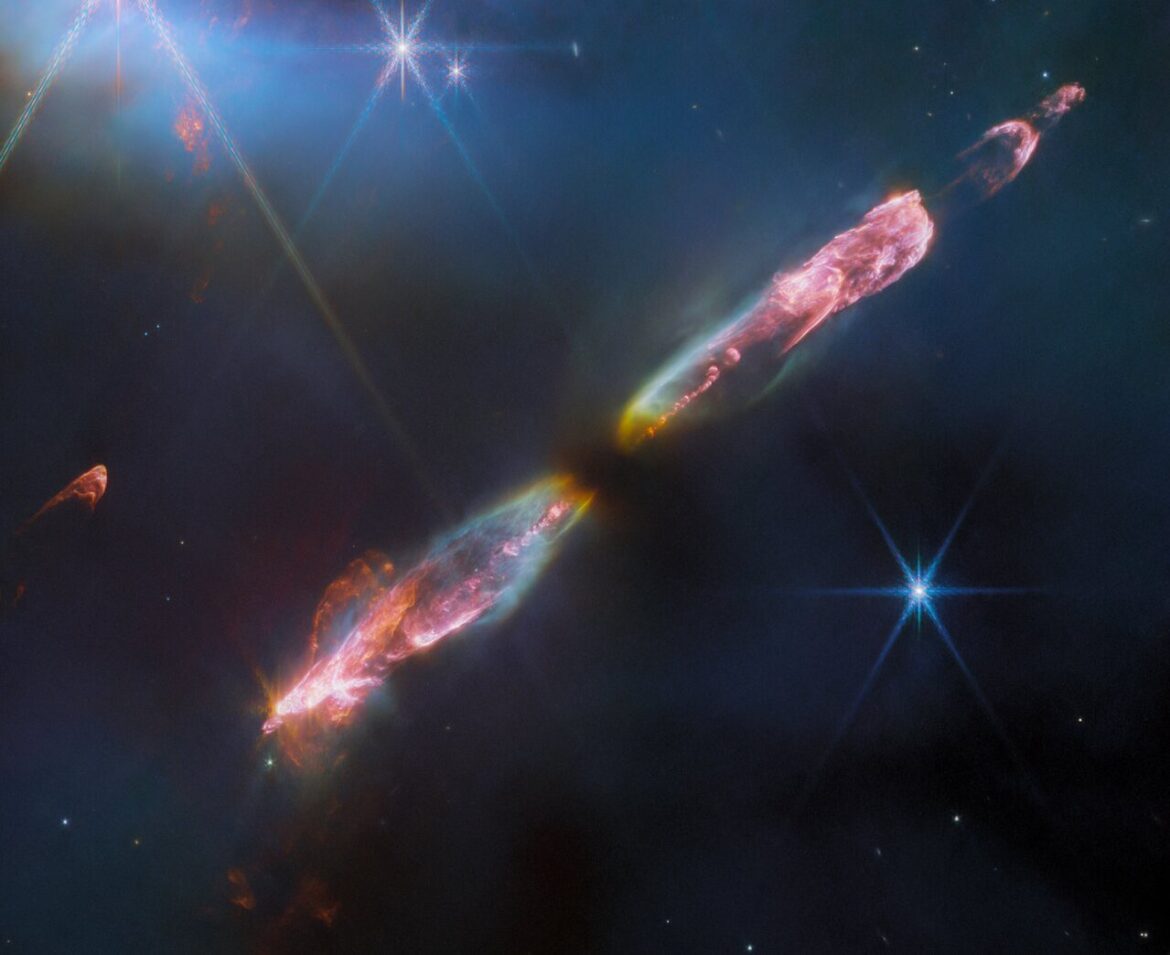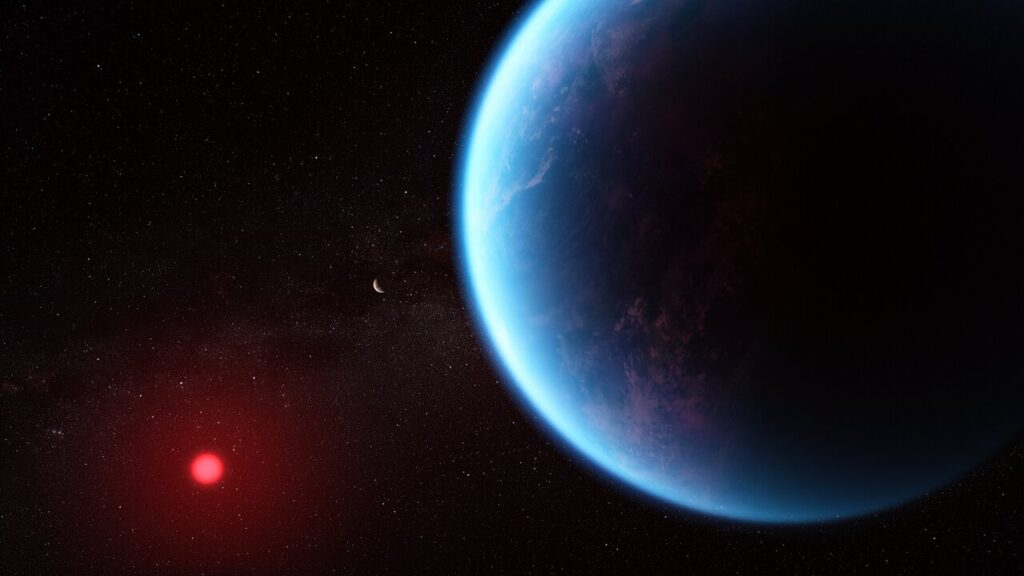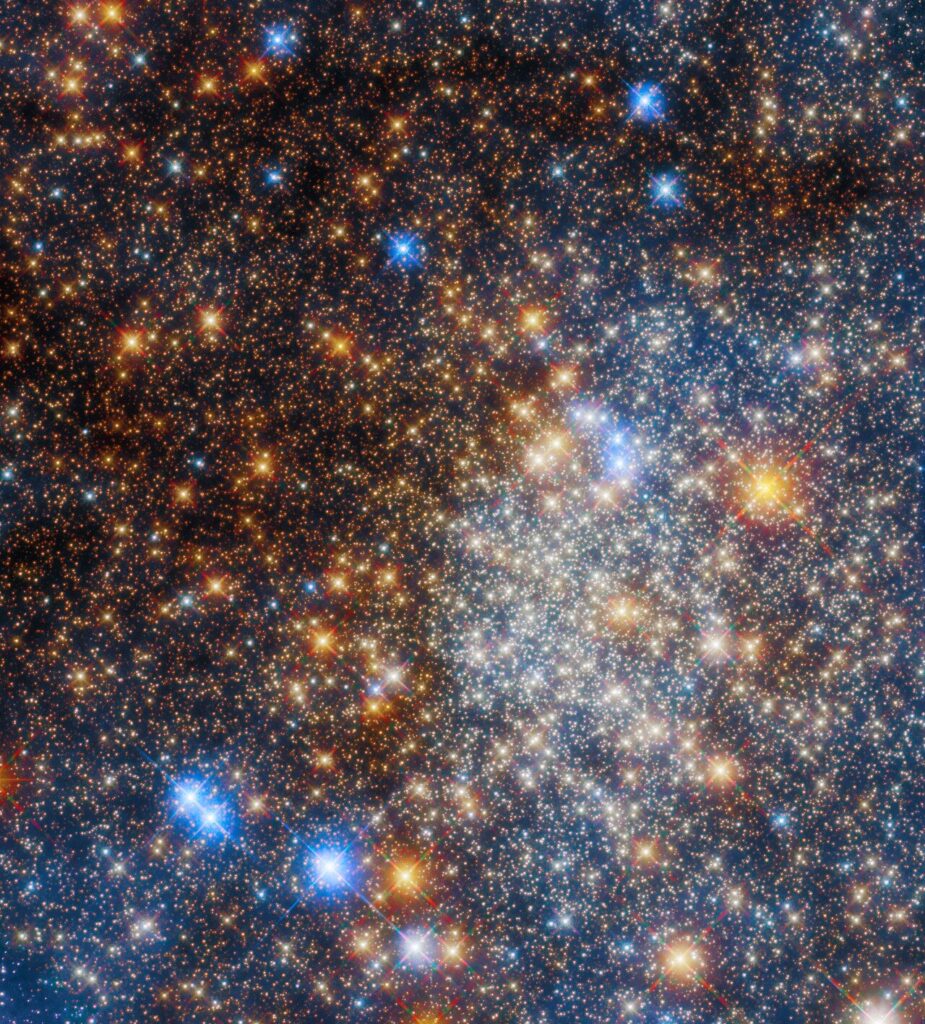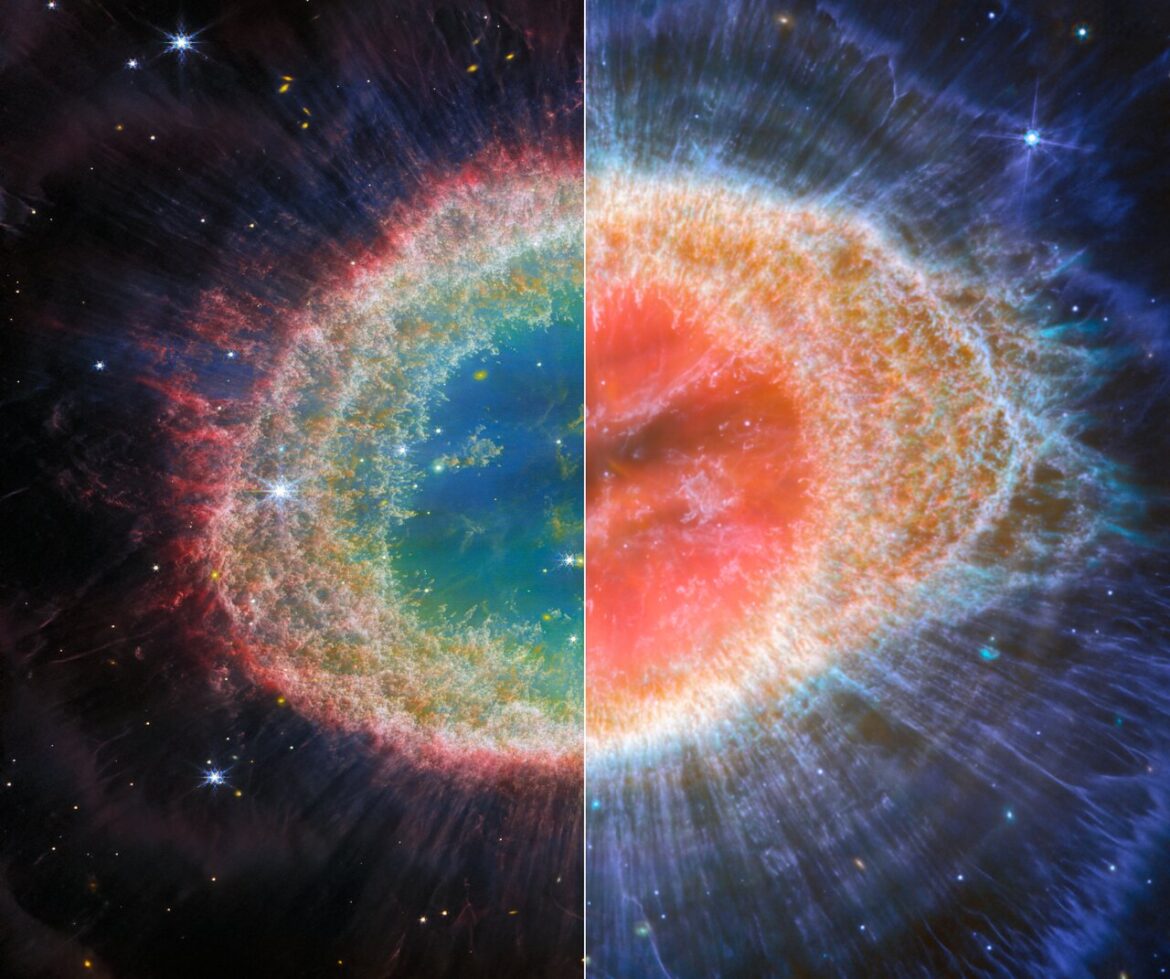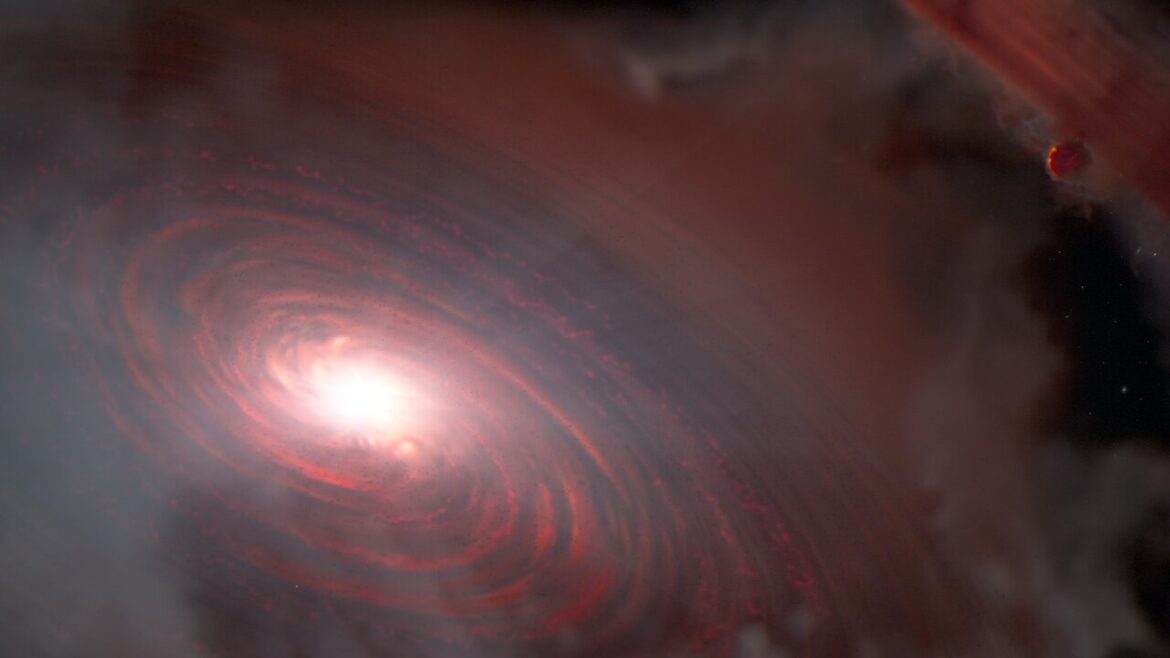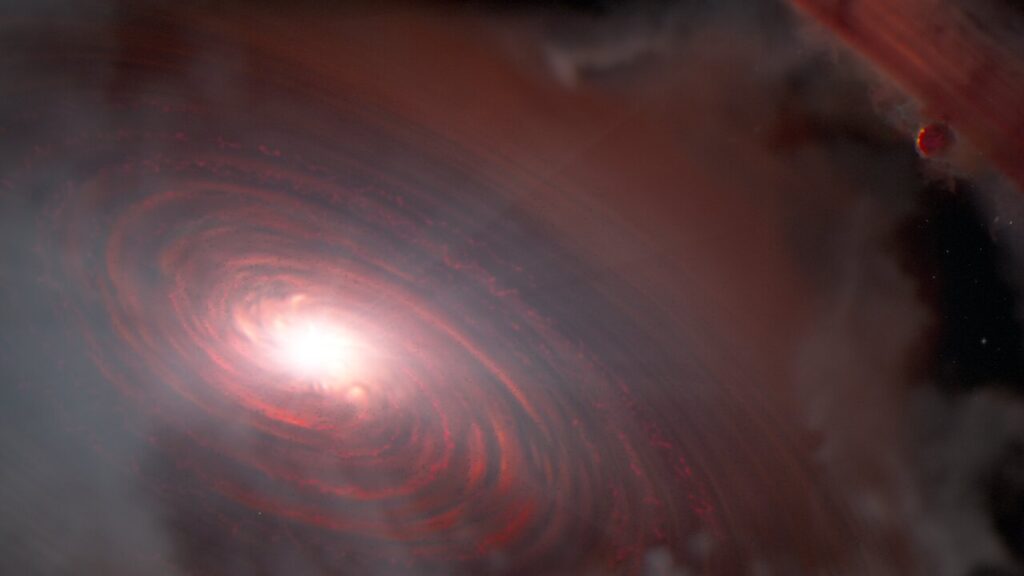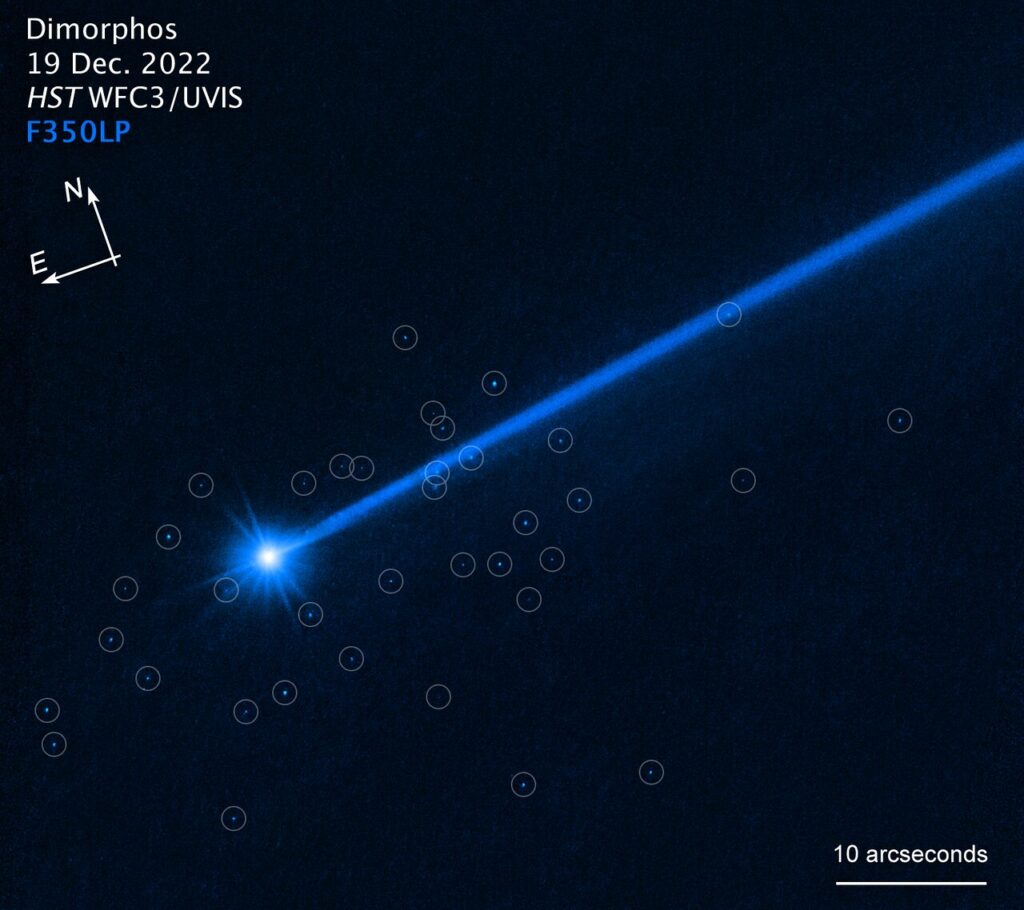GJ 367 b, A PLANET WITH AN IRON HEART IN AN EXTRASOLAR SYSTEM
THE DISCOVERY MADE BY A TEAM AT THE UNIVERSITY OF TURIN ADDS TO THE PUZZLE HOW PLANETS FORM
Researchers at the University of Turin and at the Thüringer Landessternwarte have confirmed that the extrasolar planet GJ 367 b has an ultra-high density – almost twice the density of Earth. The research team also found two more planets that orbit the same star.

Over the past decades, astronomers have found several thousand extrasolar planets. Extrasolar planets orbit stars outside our solar system. The next frontier in this research field is to learn more about their composition and internal structure, in order to develop a better understanding of how planets form.
Elisa Goffo, Ph.D. student at the Physics Department of the University of Turin (Italy) and at the Thüringer Landessternwarte (Germany), together with an international research team, has made a unique discovery about the planet GJ 367 b that raises interesting questions about how planets are born. She is the lead author of the article Company for the ultra-high density, ultra-short period sub-Earth GJ 367 b: discovery of two additional low-mass planets at 11.5 and 34 days published in The Astrophysical Journal Letters.
Elisa Goffo is part of the international KESPRINT collaboration, which confirmed that the ultra-short period exoplanet GJ 367 b, whose orbital period is only 7.7 hours, is also ultra-dense. The density of a planet can be determined from its mass and radius. GJ 367 b is ultra-dense because the researchers found its density to be 10.2 grams per cubic centimeter. That is almost twice the density of Earth, suggesting that this extrasolar planet consists almost entirely of iron.
An unusual composition
Such a composition of a planet is very rare, raising questions about its formation.
“You could compare GJ 367 b to an Earth-like planet with its rocky mantle stripped away. This could have important implications for the formation of GJ 367 b. We believe that the planet might have formed like the Earth, with a dense core made mainly of iron, surrounded by a silicate-rich mantle. A catastrophic event could have stripped away its rocky mantle, leaving the dense core of the planet naked. Alternatively, GJ 367 b was born in an iron-rich region of the protoplanetary disc”,
explains Elisa Goffo. While observing GJ 367 b, the team discovered two additional low-mass planets that orbit around the star GJ 367 in 11.5 days and 34 days, respectively. These three planets and their star comprise an extrasolar system.
GJ 367 b was first found with the Transiting Exoplanet Survey Satellite (TESS), a space telescope operated by NASA. TESS uses the transit method to measure the radii of exoplanets – among other properties. In order to precisely measure the mass of GJ 367 b and confirm that the planet has a very high density, the KESPRINT researchers at the University of Turin and at the Thüringer Landessternwarte acquired nearly 300 radial velocity measurements using the HARPS spectrograph, a high-precision instrument installed at the 3.6 meter telescope operated by the European Southern Observatory (ESO) at La Silla Observatory, Chile.
“Thanks to our intensive observations with the HARPS spectrograph we discovered the presence of two additional low-mass planets with orbital periods of 11.5 and 34 days, which reduce the number of possible scenarios that might have led to the formation of such a dense planet”, says Davide Gandolfi, Professor at the University of Turin. “While GJ 367 b might have formed in an iron-rich environment, we do not exclude a formation scenario involving violent events like giant planet collisions.”
Artie Hatzes, director at the Thüringer Landessternwarte, underscores the relevance of this discovery: “GJ 367 b is an extreme case of an exoplanet. Before we can develop viable theories of its formation, we must precisely measure the planetary mass and radius. We expect an extrasolar system to consist of several planets, so it was important to search for and to find other planets orbiting in the system – to study its architecture.”
MORE INFORMATION
KESPRINT: Consisting of more than 40 members in nine countries (Czech Republic, Denmark, Germany, Italy, Japan, Spain, Sweden, UK, USA), the KESPRINT research consortium is devoted to the confirmation and characterization of transiting exoplanets found by space missions (e.g. Kepler, K2, TESS), with a special emphasis on the characterization of the smallest planets. Its members are from the Dipartimento di Fisica, Università di Torino, Italy, Thüringer Landessternwarte Tautenburg, Germany, Institute of Planetary Research, German Aerospace Center (DLR), Germany, Technische Universität Berlin, Germany, Rheinisches Institut für Umweltforschung an der Universität zu Köln, Germany, Astronomical Institute of the Czech Academy of Sciences, Czech Republic, Chalmers University of Technology, Sweden, Instituto de Astrofísica de Canarias, Spain, Mullard Space Science Laboratory, University College London, UK, University of Oxford, UK, Stellar Astrophysics Centre, Department of Physics and Astronomy, Aarhus University, Denmark, Astronomy Department and Van Vleck Observatory, Wesleyan University, USA, McDonald Observatory, The University of Texas at Austin, USA, The University of Tokyo, Japan, Astrobiology Center, National Institute of Natural Sciences, Japan.
GJ 367 b and the exoplanet naming convention: Planets are usually named after their host stars, adding a lowercase letter. A planet around the star GJ 367 is called GJ 367 b, c, or d. However, the planet GJ 367 b and its star GJ 367 were named in 2022 during the “NameExoWorlds” project coordinated by the International Astronomical Union. The planet GJ 367 b is called Tahay and its star is called Añañuca, after Chilean wildflowers.
The 7.7 hours period during which GJ 367 b orbits its star stands out even among other ultra-short period planets because it is such a short orbit. One year on this planet is only 7.7 hours long. Its mass is 60 % that of Earth’s mass. Its radius is 70 % that of Earth’s radius. Therefore, it is smaller and less massive than the Earth.
Due to its proximity to the host star, the dayside surface of the planet is expected to have a temperature of almost 1.100 degrees Celsius. The star GJ 367 (Añañuca) is located roughly 31 light years from Earth, i.e., it takes about 31 years for the light to travel this distance.
How the transit method works: NASA’s TESS telescope uses the transit method to search for planets around stars other than the Sun. A transit occurs when a planet moves between its host star and us. Whenever it passes in front of its star, it blocks a small portion of the star’s light. The transit method measures this change in brightness, which yields the orbital period and inclination, the planetary radius, and other parameters.
How the radial velocity method works: The KESPRINT team observes exoplanets with the radial velocity method, which detects the existence of a planet around a star via the Doppler effect. We usually say that planets orbit stars, but that’s not entirely true: planets and stars orbit around their common center of mass! Stars emit light at different colors that become bluer or redder depending on whether the stars are moving toward or away from us while orbiting around the center of mass. When combined with the transit method, radial velocity measurements provide the mass of the planet.
The Physics Department at the University of Turin. Over the past decade, the Exoplanet group at the Physics Department of the University of Turin has focused on the detection and characterization of planets orbiting stars other than the Sun, especially those transiting their host stars, combining space-based observations with high-precision spectroscopy. The group at the University of Turin has led and coordinated the observations of GJ 367 carried out with the HARPS spectrograph.
Press release from the University of Turin.





